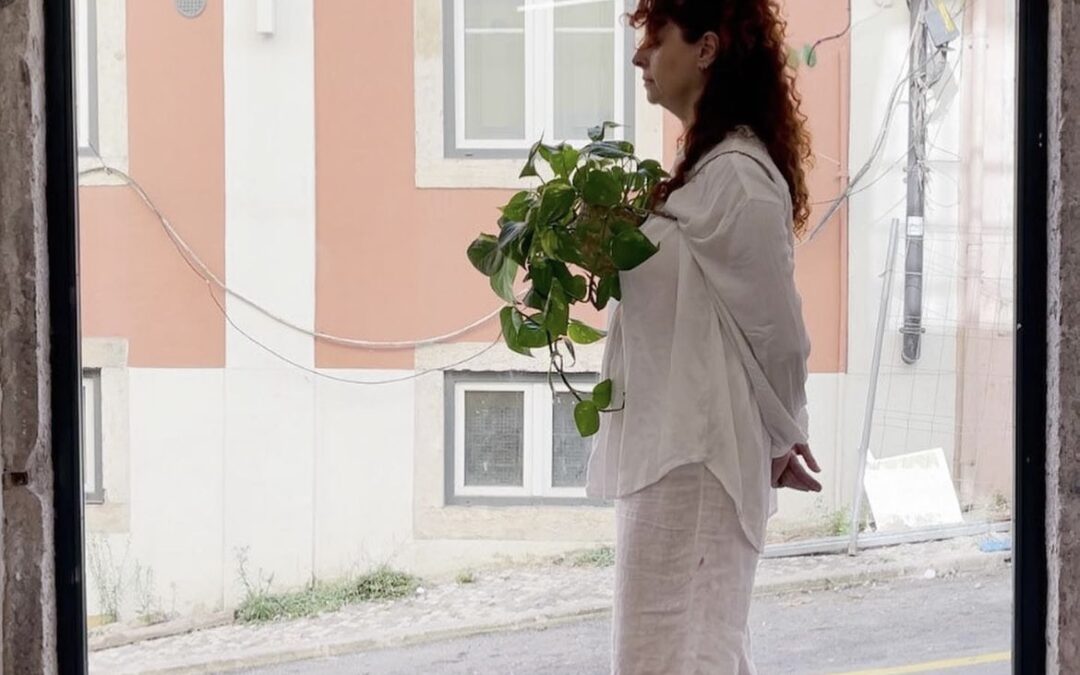
by Stephanie Wruck | Dec 21, 2021 | Article
To continue our discussion about time, we spoke with artist Dárida Rodrigues, originally from São Paulo. Her research materializes through audiovisual installations, audio walks, performances and site specifics as an attempt to investigate relational art and human consciousness itself. Dárida shared with us the experience of creating in isolation, the role of plenty of time in artistic practice and her personal relationship with the passage of time.
I would like to start by talking about the intentionality behind your work on “lengthening time” for a closer look at our surroundings and what lives inside us as well. Where did this need to unite artistic practice with meditative methods come from?
D: Well, I feel that time, or rather the passing of time, is one of the only constants in our experience, while everything changes. And the possibility that time “stops, stretches or flies” based on our perception of each particular experience has always interested me a lot. I think this phenomenon of change in perception and, above all, the relationship established between it and our mental and emotional states, is also one of the things that have always connected me to meditative practices for a long time now.
So I think that this opening of an internal space where temporality unfolds in other possible configurations and that simultaneously allows one to more fully inhabit the present moment, which I explored a lot through meditation, of emptying even for a few seconds the mind also crosses my work, I think, before intentionality. It is really a gap that attracts me as an investigation and that I am interested in exploring in this transposition of territories between art and life, perhaps because, at least for me, these meditative fields, or the spiritual, if you like, is also the field where art operates . It has become naturally part of the process to integrate or even subvert meditative methods when trying to create relationships between subjectivity, time and space.
His last work “Vice-Versa” explores this idea of movement of affections that interconnect the inside and the outside, the reception and expression of information and images… And the work also ended up illustrating the passage of time through the observation of the flow of people on the street and interactions with the work itself. What did you glean from the experience of creating the work “Vice-Versa”?
D: I'm still processing this crop…because the work has uncovered many layers that have been interesting to observe. But I can say that this impulse to try an inversion of point of view, taking advantage of this relationship between the inside and the outside that the space of the shop window and the street provides, through the resource of projected video, allows many other relationships to be established and developed. confront, as for example that of time with space, in the inverted mirror that does not directly reflect the observer, created through the video and that draws our attention a lot for the possibility of experiencing 2 or more temporalities simultaneously, such as what happened inside, what was going on outside, in the present moment and what was going on in what was seen in action in the video performance/projected mirror, which still brought other speeds, repetitions and interventions and which mediated these different relationships between subjects, plants, passers-by of the present and the image. I feel it's worth exploring this relational timespace further.


His other work [Des]segredo proposed a trajectory of a mapped path to traverse the work in a certain space. How do site-specific works manipulate our perception of time?
D: In the process of creating [Des]segredo, which was also a master's project, the audio-wall À Luz, developed for a specific journey in the Lisbon Fine Arts building, which is a very old building, of historical materiality, where one feels the weight not only material but temporal as well; it was interesting to explore the proposition of an inner (or meditative) drift through displacement in space, as a process of approximation to a common place of a one-to-one relationship, around the idea of the Secret, which was proposed at the end.
From this soundscape brought by the voice instructions, experienced and recreated in the present when walking through space and also through the subjective temporalities that happen at the moment, for each participant, I was also able to observe how a space/time journey was made specifically to exist in a space in an artistic scope, can not only influence (or manipulate) our perception of time but also be influenced by it. This is because I feel that the site-specific works are intrinsically linked to the space, at the same time that they open up, through this possibility of the manifestation of a subverted temporal space, to interventions and transformations of the same and in this sense, they are very interesting in this exploration of the interior and relational universe in dialogue with temporality.
The work [In]surge, which was created during the quarantine, is another work of auditory immersion. One of our questions within the theme of time is to investigate how the lack or abundance of time affects the creation processes. What was it like creating this work during a period of isolation?
D: It was, at the very least, a good questioning exercise, so much so that in the beginning I called the [In]Surge series “Exercises for “Touching the becoming, Embracing the pain and Chewing the real”.
I, who had decided to kind of transgress in the field of art, some meditative methods, by proposing displacement, distraction, a poetics that involved me personally in the texts and in the audios, suddenly I felt that life asked, first of all, to digest, with an unprecedented limitation of space and movement, a dystopian and uncertain reality, where these “conventional” meditation methods, despite being very useful physiologically, did not seem to make much sense to me at that moment. It was really a necessity to integrate them with the creation process. So I started to write these audio instructions to work with the possibilities of a meditative and sensorial abstraction from this condition of confinement and the sudden pseudo-abundance of time and impossibility of movement, with all the emotions and questions that arose and insurged internally.
Is it possible for artists to take advantage of the esoteric nature of the creation process in an extremely fast-paced world like the one we live in today?
D: Yes, it is difficult to think what is not possible in terms of art. But personally, I feel that it is essential to let ourselves exist in life and art in the most integral way that is possible for each one, so as not to be totally swallowed or captured by the extremely capitalized and mediatized life, which characterizes the instituted, flawed, “humanism”. but accelerated today. And I think that this esoteric, spiritual or transpersonal universe is much broader and present in our subjective experience than we often imagine or intellectualize, especially since we almost always operate within the hegemonic Western thought, where we have difficulty making room for what is not it can be configured by these parameters and so we do not connect with the possibilities of intuiting and creating rituals or spells that are natural and not “supernatural”, to explore our inner universe and invent other realities. The artistic field is very fertile ground for this exploration, in my opinion. Much of what we see as part of an esoteric nature and that is not related to the rational thinking we know, may be common practice for some other communities and species, for example. If we see or make art only from the point of view of our (often limited) culture, we will always leave out experiences and experiences that may be fundamental to exist and who knows, to flourish in fact and politically in the present. I don't see space/time more receptive to this than art.
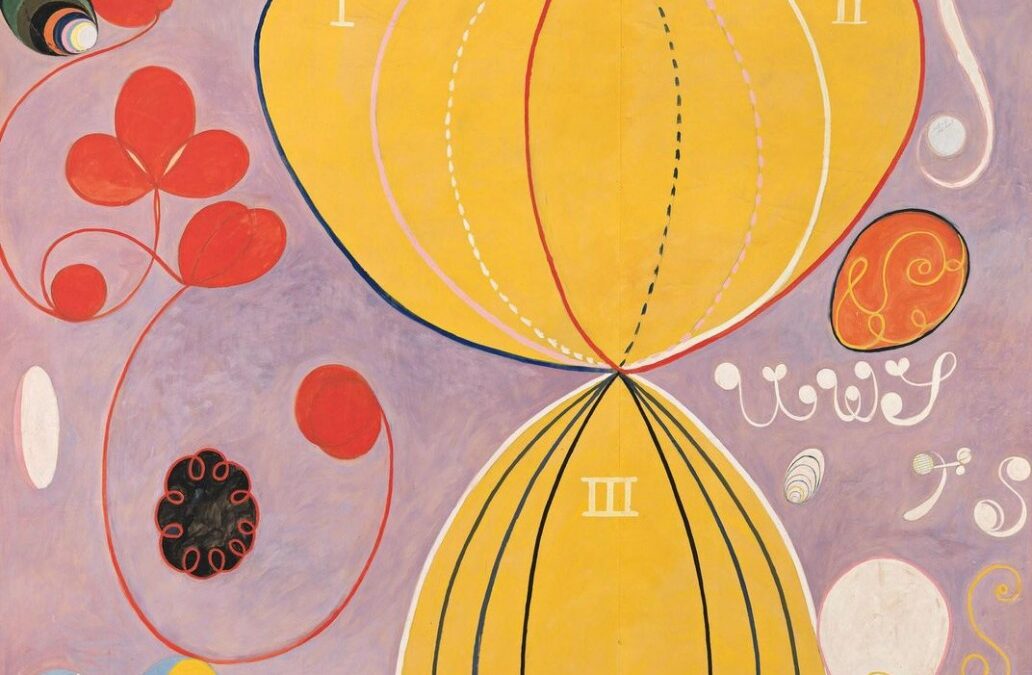
by Stephanie Wruck | Dec 13, 2021 | Article
To start our discussion around the theme of TIME, today we bring the work of the artist Hilma af Klint, who created more than 150 paintings between the years 1906 and 1915. These paintings were called “The Paintings of the Temple” and consist mainly of images abstract and organic shapes inspired by the geometry of nature. Klint's work presents a world beyond the one we know; that transcends its current time and challenges the way we observe reality.
Klint envisioned a temple that would house the paintings and described it in one of his many diaries as a "round building, where visitors would ascend a spiral staircase on a spiritual journey". Hilma's description is extraordinary, as she describes the Solomon R. Guggenheim Museum in New York City, which would only be built decades later and would also be the host museum for her solo exhibition “Paintings for the Future” in 2018. Frank Lloyd Wright , the architect of the Guggenheim, created an untraditional place for non-objective art, and both he and Klint shared an affinity for the organic forms and spiritual symbolism surrounding the spiral. Both Wright's architectural vision and Klint's paintings were a break with tradition, offering a new approach to creative expression.
Klint's mysticism involves many interests in occultism, theosophy, spiritualism and scientific concepts. The paintings for the temple served as a testament to higher spirits and the artist spent nearly a decade working on them. His abstract paintings changed the course of art history and posed the question: what is the role of time in the esoteric process of making art?
How can artists manipulate the passage of time through their practices?
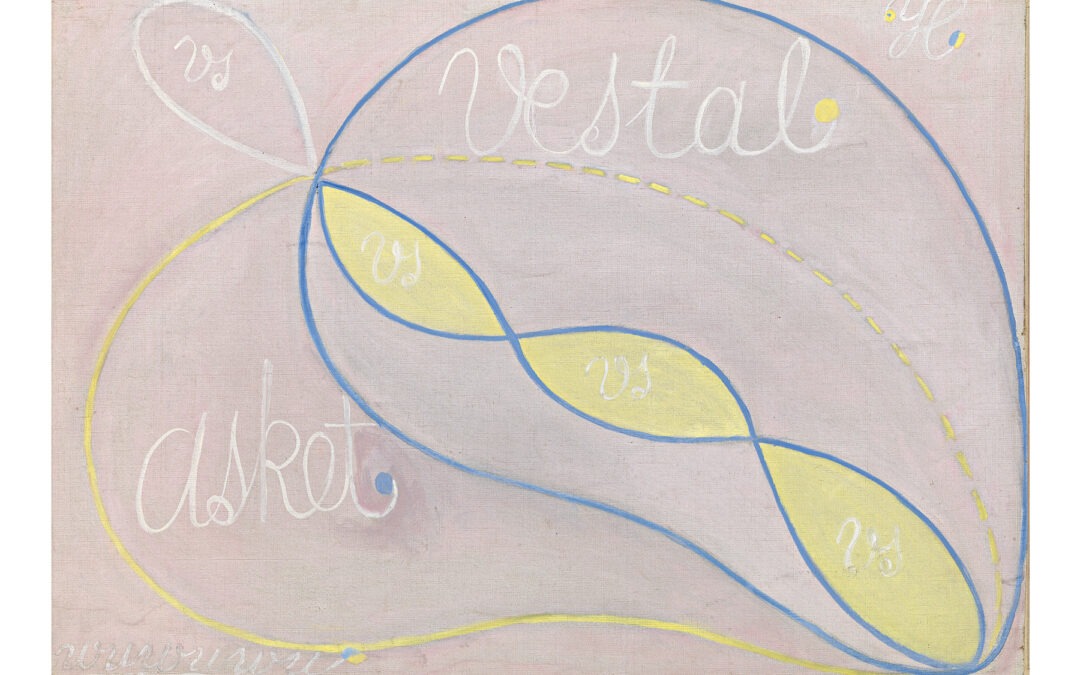
by Stephanie Wruck | Dec 10, 2021 | Article
What is the role of temporality in the artistic process?
The concept of time has been at the center of artistic expression, from the rapid strokes of the Impressionists to Bruce Nauman's observation of time in relation to space; time served both as a catapult for the emergence of new points of view and as a subject for deeper investigations. The way artists understand time in the context of their practice has always reflected the dynamic between the artist and the external demands of the world, whether through contemplation or intervention.
As we live in an ever-changing, extremely fast-paced world and our social experiences are mediated by frenetic demands, how does the lack or abundance of time affect artistic practice?
Some main points to consider:
Temporality in the process of producing art
First, it is important to think about the ways in which time has entered artistic practice and how artists try to portray the abstract and invisible nature of time through the visual arts. Secondly, the act of contemplating a work of art is also interchangeable, as the work itself changes over time, gaining new perceptions and meanings. Nagel and Wood (2010) argued that works of art always “inhabit plural temporalities”, as a work of art is made by someone at a given moment, but refers to ideas or events that often preceded that moment, or point to for an imagined future. (Serafini and Banks).
Portfolio-oriented artistic practice
While artists work in increasingly time-limited conditions, having to be self-sufficient and produce work for specific formats and platforms (a portfolio, a website or social media), is there room left for surprises and slow experimentation?
As our digital environments become more complex, the need to produce work that is relevant to current times seems to be the only “correct” way to make art. But if relevant topics are constantly changing and it's impossible to keep up with their speed, is there any time left to allow ideas to develop organically? How can artists take advantage of the esoteric – and often slow – nature of the creative process in today's world?
Lack of time when looking at art
The lack of time when it comes to visual arts has an impact not only on the creator, but also on the viewer. As for the spectator, do we still have enough time for contemplation exercises? What is the ideal time for the aesthetic experience?
Stay tuned in the coming weeks as we delve into these questions and others more related to time and art.
Sources:
Nagel, Alexander & Wood, Christopher (2010): Anachronic Renaissance, New York: Zone Books.
Serafini, Paula & Banks, Mark (2020): Living Precarious Lives, Time and Temporality in Visual Arts Careers
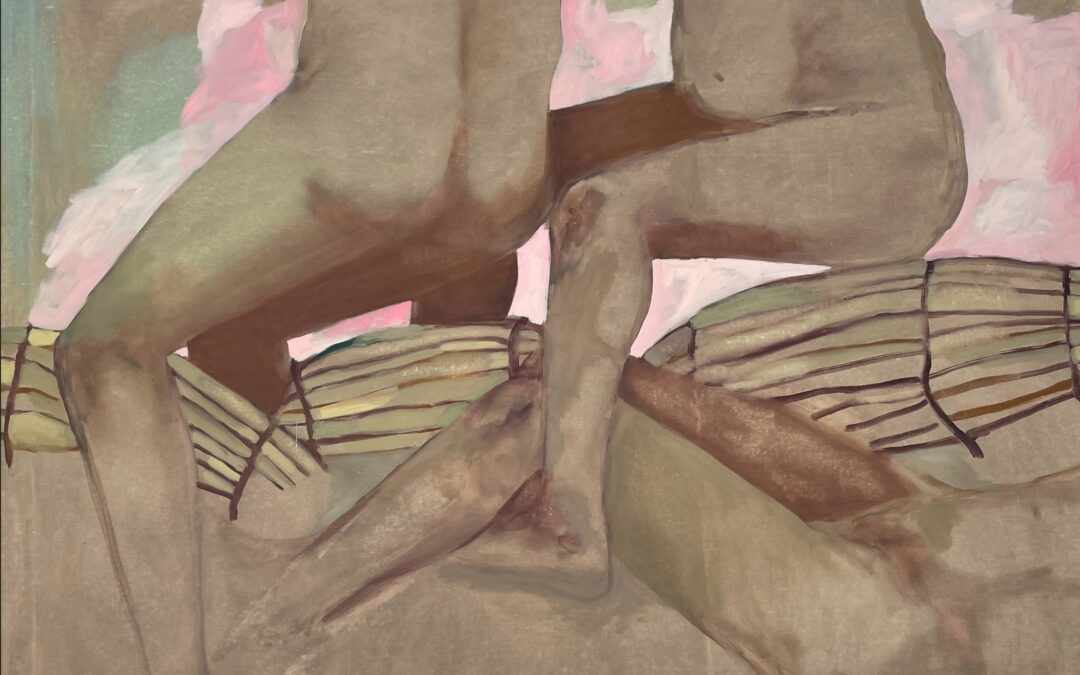
by Stephanie Wruck | Nov 10, 2021 | new artist
DISPLACEMENT
Osias André, from Mozambique, immigrated to Portugal 4 years ago where he won 3 scholarships from the independent art school Ar.Co, an institution dedicated to experimentation and artistic training. Osias started painting at the age of 8 and began his artistic career through graphic illustration, producing a collection of books. For him, painting demands a slower and more indirect digestion. In the painting works exhibited here, one can notice a search for identity, linked to their African origins, through a traditional European studio practice. The result is striking paintings, in which colors, shapes and contents act in balance, appropriating Western pictorial practice to bring to light elements arising from African cultural resistance to centuries of Eurocentrist hegemony. Osias lives and works in Lisbon.
- The displacement of classic Euro-centric pictorial compositions into new environments;
- Manipulation of colors and shapes;
- Strengthening their own identity, distancing themselves from home;
- Balance between African diaspora sensibilities and European preoccupation with theory and reason.
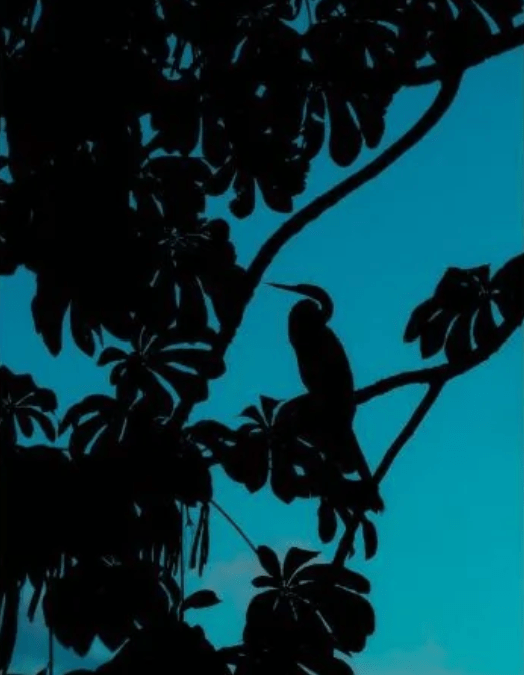
by Stephanie Wruck | Nov 10, 2021 | new artist
IMPERMANENCE
Eduardo Dias is a biologist from São Paulo, Brazil, and currently works at Mackenzie Presbyterian University as a Laboratory Technician at the Biosciences Research Center. His work takes him to Brazilian biomes such as the Pantanal, the Cerrado, the Atlantic Forest, among many other destinations, and photography plays an important role during his travels. He uses it as a tool to give vent to his imagination, but also as a means to create a didactic repertoire in which his knowledge of biology unites with art. Its objective is to show the beauty of nature through sensitive images, exalting its organic structures and singularities. For Eduardo, this union of forces between art and biology is a way of alerting us about the environment we inhabit and everything that lives around us.
- Capture landscapes and species as a warning about the imminent threat to nature;
- Demystify ideas about the natural world by praising the beauties of its reality;
- Reduce the distance between people and their environment.

by Stephanie Wruck | Nov 10, 2021 | new artist
IMPERMANENCE
Gabriela Albuquerque is a Brazilian artist who lives and works in Cascais. His current research focuses on recurring landscapes and developments beyond the academic historical tradition of this genre. The almost compulsive repetition of images seeks to exalt the paradox between permanence and impermanence of our surroundings, of what is familiar to us, but also ephemeral. The option for oil paintings, which follow a centuries-old tradition, questions the continuity of certain practices that resist despite constant innovations. More than records of moments and places, they are also an attempt – perhaps frustrated – to make permanent what is ephemeral. The works shown here reinforce the idea that we are transitory, not the spaces we occupy.
- Landscapes watch us, not the other way around;
- Natural landscapes serving as reminders of human impermanence.

by Stephanie Wruck | Nov 10, 2021 | new artist
DOCUMENTATION
Martim Meirelles is an American photographer who lives and works in New York. Of Portuguese descent, Martim travels between the USA, Portugal and Mozambique. His photographic research documents human lives that live on the margins of economic prosperity and share a common Portuguese language background. His work focuses on beauty, pain and joy, highlighting the artist's ability to approach each subject with a profound visual sensitivity. The photographs presented here are the result of a one-year stay at the Madre Maria Clara orphanage in Mozambique in 2017 and also of an artistic residency in Nazaré in 2014.
- Documentation of lives and traditions;
- Exposition of the human condition.

by Stephanie Wruck | Nov 10, 2021 | new artist
TERRITORY
Juliana Matsumura is Brazilian and currently lives in Lisbon. He graduated in Design at Escola Ar.Co, and attended the Graduation in Textiles and Fashion at USP. The artist is a member of Risco Coletivo, a collective of contemporary design practices. Drawing is his main means of expression and to carry it out he appropriates various tools such as engraving, photography and painting. The series presented here is part of his work “Memories of Water”, which addresses the closest contact with his Japanese ancestry and his trajectory as a Brazilian immigrant in Lusitanian lands. The unknown quality of foreign territories is exposed through diffuse tones like dark spots. The shapes are reminiscent of blurred memories that merge with the expectations that come with the migration process. Juliana is capable of architecting new territories where the weight of ancestry and the novelty arising from new experiences are simultaneously present.
- Rivers that lead to shared territories while carrying memories of a lost ancestry;
- The flow of water is responsible for altering its surroundings.

by Stephanie Wruck | Nov 10, 2021 | new artist
Displacement
Natália Loyola has a degree in Social Communication and Journalism and is studying a master's degree in Anthropology – Visual Cultures at Universidade Nova de Lisboa. His research focuses on the exercise of observation of places where he circulates, especially within urban landscapes. His photographs function as an imagery construction of territorial markers of his own migratory process, all seen in his interactions with the city itself and its inhabitants. Natália's sensitive perception starts from dualities such as: movement vs. quietude; nomad vs. sedentary; real vs. imagery and evokes a sense of familiarity with the themes of each image. The works presented reflect the artist's study of displacement as an exercise in body criticism. Natália lives in Almada and works around the world.
- Walking as a critical corporal practice;
- The exercise of making a place from everyday life;
- Mapping imaginary fields through the appropriation of physical spaces.
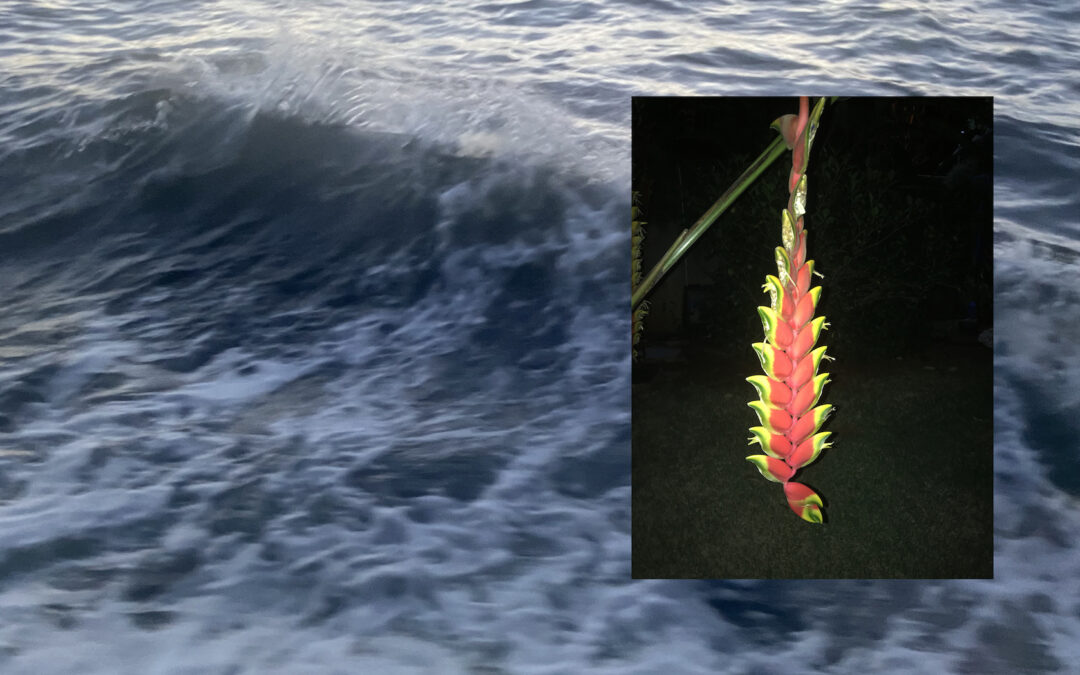
by Stephanie Wruck | Oct 31, 2021 | Events
Saturday, November 20th, at 5 pm, we will have a chat with Natália Loyola and Roberta Goldfarb about their individual practices and works presented at the exhibition.
Join us at Fábrica Braço de Prata!


by Stephanie Wruck | Oct 31, 2021 | Events
Coletivo Amarelo is honored to announce its inaugural exhibition surroundings in Lisbon!
Opening: November 13th at Fábrica Braço de Prata, from 7 pm on the second floor.
This is the collective's first physical exhibition after a year working only digitally. The exhibition marks the role of Coletivo Amarelo in the cultural and artistic panorama of the city of Lisbon, presenting the work of artists from different parts of the world.
Entorno presents the work of seven artists: Juliana Matsumura, Eduardo Dias, Osias André, Gabriela Albuquerque, Martim Meirelles, Natália Loyola and Roberta Goldfarb. The works presented unfold a series of dialogues woven by a common thread: our surroundings.
The exhibition explores how these artists used their practices to dissect their tangible surroundings, giving viewers the possibility to interact with variations on the same concept. The works were subdivided into five subcategories: observation, displacement, territory, documentation and impermanence. Although in the year 2020 the world has drastically changed the engines of human operations towards an essentially virtual life, the “real” environments that surround us are still the ones that most influence our experiences. At the center of the exhibition are the artists' individual abilities to encompass the physicality of their surroundings within a frame. Each work is a response to the visual plane that existed at some point in time and space, crossing its own disciplinary boundaries (painting, photography and video installation) in order to bring the viewer closer to a shared orbit.
Whether through the observation of time, the displacement of the body and identity, the rediscovery of a lost territory, the documentation of experiences or the impermanence of life, the works presented serve as an attempt to build a reflective landscape of reality.
ABOUT THE ARTISTS:
Osias Andre
Osias André, born in Mozambique, emigrated to Portugal four years ago where he won three scholarships from the independent art school Ar.Co, an institution dedicated to experimentation and artistic training. Osias started painting at the age of eight and began his artistic career through graphic illustration, producing a collection of books. For him, painting requires a slower and more indirect digestion. The paintings presented here are linked to their African origins, while at the same time reflecting Osias' search for identity conducted through a traditional European studio practice. Osias currently lives and works in Lisbon.

Juliana Matsumura
Juliana Matsumura is a Brazilian artist who currently lives and works in Lisbon. He graduated in Design from Escola Ar.Co, and attended the Graduation in Textiles and Fashion at the University of São Paulo. The artist is also a member of Risco Coletivo, a collective of contemporary drawing practices. Drawing is central to her practice, using various tools such as engraving, photography and painting. Juliana currently lives and works in Lisbon.

Natalia Loyola
Natália Loyola has a degree in Social Communication & Journalism and is also finishing her Masters in Anthropology – Visual Cultures at Universidade Nova de Lisboa. His research focuses mainly on the exercise of observation of the places he circulates, especially in urban landscapes. Natália's photographs are a construction of imagetic territorial markers of her own migratory process, all seen from her interactions with the city itself and its inhabitants. Natália currently lives and works in Almada, Portugal.

Gabriela Albuquerque
Gabriela Albuquerque is a Brazilian artist who works and lives in Cascais. His current research focuses on recurring landscapes and developments beyond the historical academic tradition of this genre. The almost compulsive repetition of images seeks to exalt the paradox between the permanence and impermanence of our environment, of what is familiar to us, but also ephemeral. The choice of oil paint as a support, which follows a centuries-old tradition, questions the continuity of certain practices that persist despite constant innovations. Gabriela's work tensions the tradition of oil painting in the context of contemporary art.
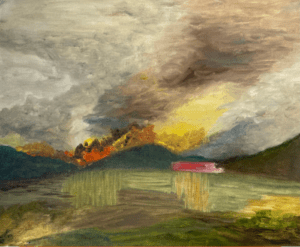
Eduardo Dias
Eduardo Dias is a biologist from São Paulo, Brazil and currently works at Universidade Presbiteriana Mackenzie as a Laboratory Technician at the Center for Research in Biosciences. His practice takes him to Brazilian biomes such as the Pantanal, the Cerrado, the Atlantic Forest, among other destinations, and photography plays an important role in his travels. He uses it as a tool to give wings to his imagination, but also as a means to create a didactic repertoire in which his knowledge of biology merges with art.

Martim Meirelles
Martim Meirelles is an American photographer who lives and works in New York. Of Portuguese descent, Martim travels between the USA, Portugal and Mozambique. His photographic research documents human lives that live on the margins of economic prosperity and share the same Portuguese linguistic origin. In his work, there is a focus on beauty, pain and joy, highlighting the artist's ability to approach each subject with a profound visual sensitivity. The photographs presented here result from a one-year stay at the Madre Maria Clara orphanage in Mozambique in 2017 and also from an artist residency in Nazaré in 2014.

Roberta Goldfarb
Roberta Goldfarb is a Brazilian artist who currently lives and works in Lisbon. She holds a degree in Publicity and Propaganda (FAAP, 2001) with emphasis in photography from Senac (São Paulo), La Escuela de la Imagen y el Diseño and Center Cívic Pati Llimona (Barcelona) and International Center of Photography (New York). Her research is driven by the artist's desire to collect and catalog physical objects and experiences that would otherwise be lost to memory. Roberta builds spheres of feelings and meanings by displaying what she sees with her eyes. Among the exhibitions in which he participated, the most notable are “Dizer Fazer” (Ateliê RG, SP, 2014), “While Tempo” (Oficina Oswald de Andrade, SP, 2014), Clube dos Colecções (NowHere, Lisbon, 2020) and the solo show “Uprisings, gusts of wind or plans to see the world” (Ateliê RG, SP, 2014) and “Preambles to a World Tale” (Galeria Rabieh, SP, 2012). He is currently participating in the group show “Toll of Me – Foco Brasil” (Not a Museum, Lisbon).

Curated by Stephanie Wruck
To receive the complete catalog of the exhibition, send us an email to: contact@coletivoamarelo.com
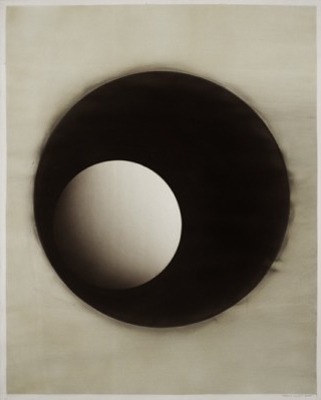
by Stephanie Wruck | Aug 19, 2021 | Article
Perception:
effect of perceiving, of understanding the meaning of something through the senses.
The act of observing what surrounds us occurs every day automatically and immediately, regardless of the spaces we are inserted; whether in a museum, indoors or walking through the city streets. From these observations, it is possible to assign meanings to certain situations and circumstances.
Based on this idea, what are the advantages of questioning our own processes of looking at artistic works?
The theme of the time is perception, contextualized within the mechanisms of the look. The exercise of observing a work of art can happen in countless ways, generating different results on the work itself and also on the observer.
Our ability to assign meaning to artistic works can develop more profoundly when we are attentive to our own observation processes. What's the difference between assigning meanings versus genuine, organic understanding?
There are images that work as a means to give meaning to situations and scenarios, and others that offer an automatic understanding of what was not previously chewed for our consumption. In this case, what would be the role of the observer in producing meanings for works of art?
Our perceptions also interfere in the production of our memories, merging imagery information and creating new languages and meanings. Therefore, our imaginary fields are constantly changing. Is it possible to cultivate our own gazing mechanism to become deeper and more meaningful?
Over the next few weeks, we will propose eye exercises, investigate our relationship with the way we see works of art, and illustrate the theme by bringing works by artists who dialogue with these questions.
Image: Marco Tirelli





















